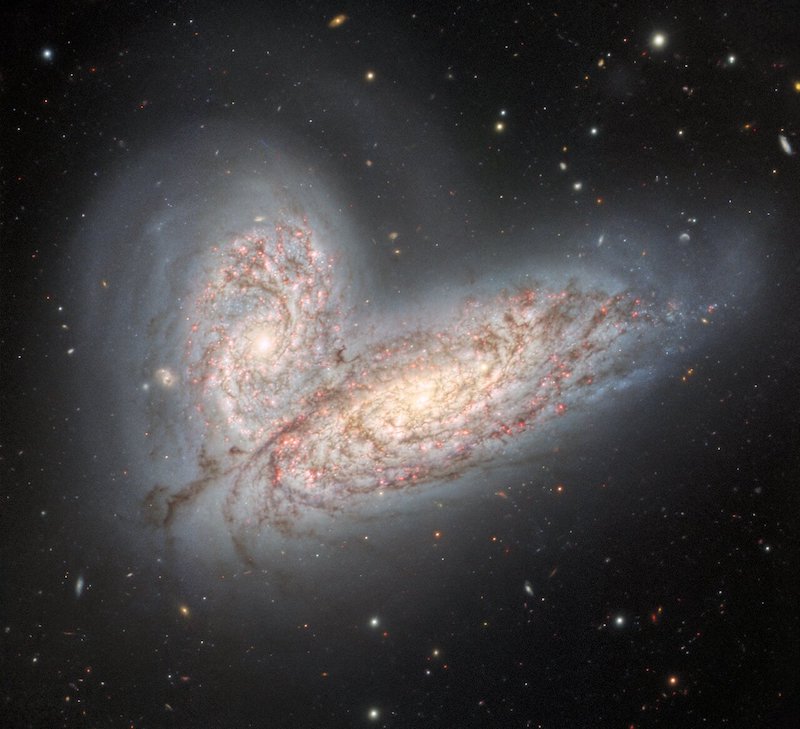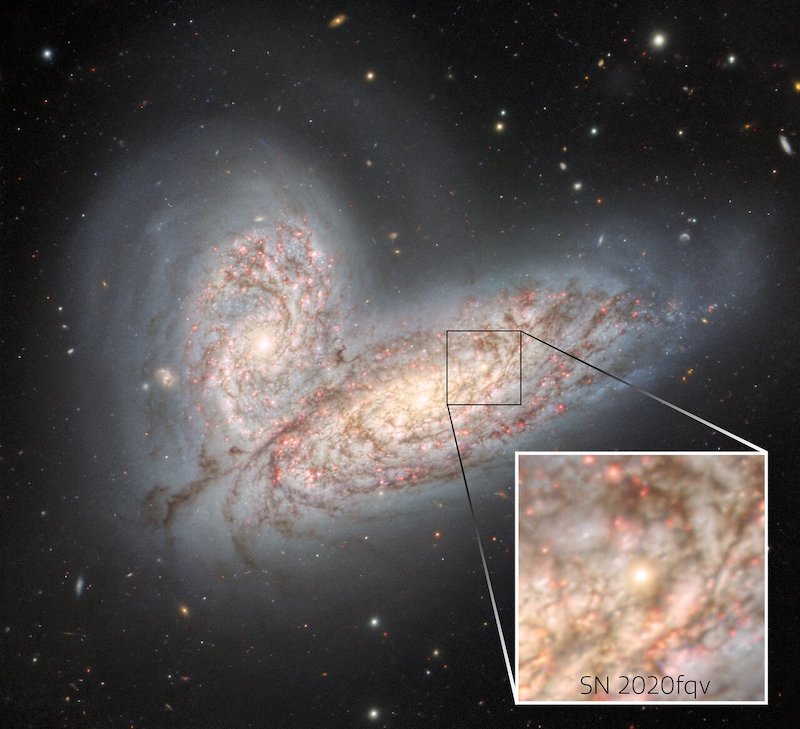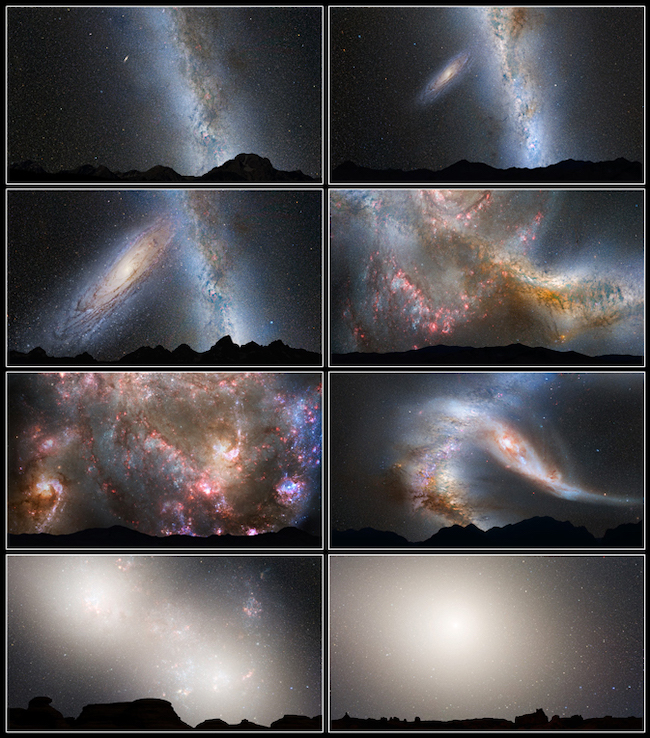
No, it’s not just a line-of-sight coincidence. The two galaxies in the image above are actively colliding. You might think this stunning new image is from the space-based Webb telescope. But in fact, it’s courtesy of the Gemini North telescope in Hawaii. We’re witnessing two galaxies beginning to merge together due to their mutual gravitational pull. Over hundreds of millions of years, the galaxies will continue to mesh together, until they form one new galaxy. That won’t happen for about another 500 million years, however. Bonus: You can spot the glowing remains of a supernova in the new image!
A galactic collision millions of light-years away
The Gemini North telescope captured the two galaxies – NGC 4567 and NGC 4568 – just as they are beginning their merge. And to be sure, there’s no danger to our own galaxy. This cosmic collision is far away from us, about 60 million light-years. The galaxies are in the direction of the constellation Virgo.
NGC 4568 is the larger-appearing galaxy on the bottom, while NGC 4567 looks like it is dive-bombing its companion. At this point, both galaxies retain their spiral shapes. But eventually, they will merge to form a single elliptical galaxy. Currently, the centers of the two galaxies are about 20,000 light-years apart.

The galactic collision is a slow cosmic dance
When we hear the word collide, we tend to think of a fast and brutal smash-up. Instead, a galactic collision is a more gradual merging that takes millions of years. The combined gravity of the galaxies causes them to repeatedly brush past each other. They swing by each other in ever-tightening loops. Very slowly, they lose their spiral shapes as gravity triggers star formation and distorts them. In due time, the two separate galaxies become one roughly elliptical or spherical new galaxy.
As the galaxies merge together, immensely long streamers of stars and gas either mix together or are ejected. However, because distances between stars are so large, the likelihood of stars actually colliding in a galaxy merger is as low as in a lone galaxy. Instead gravity affects their positions, and they move as the gas does.
Check out this video simulation zooming in on the colliding galaxies:
A glimpse of the Milky Way’s future
The image of NGC 4568 and NGC 4567 is incredible in its own right. It shows one of the most mesmerizing – albeit slow and drawn-out – events in the natural universe. But, it also provides a glimpse into the future of our own Milky Way galaxy. In a few billion years, astronomers say, our galaxy will suffer a similar fate, colliding with the nearby Andromeda galaxy. You can watch a simulation in the video below:

Here is a description of what’s happening in the images above:
First Row, Left: Present day.
First Row, Right: In 2 billion years the disk of the approaching Andromeda galaxy is noticeably larger.
Second Row, Left: In 3.75 billion years Andromeda fills the field of view.
Second Row, Right: In 3.85 billion years the sky is ablaze with new star formation.
Third Row, Left: In 3.9 billion years, star formation continues.
Third Row, Right: In 4 billion years Andromeda is tidally stretched and the Milky Way becomes warped.
Fourth Row, Left: In 5.1 billion years the cores of the Milky Way and Andromeda appear as a pair of bright lobes.
Fourth Row, Right: In 7 billion years the merged galaxies form a huge elliptical galaxy, its bright core dominating the nighttime sky.
Bottom line: Astronomers using the Gemini North telescope in Hawaii have captured a stunning new image of a galactic collision of two galaxies 60 million light-years away. The event also provides a glimpse into the future when our Milky Way galaxy and the Andromeda Galaxy eventually merge.
The post Wow! See a galactic collision in stunning detail first appeared on EarthSky.
0 Commentaires